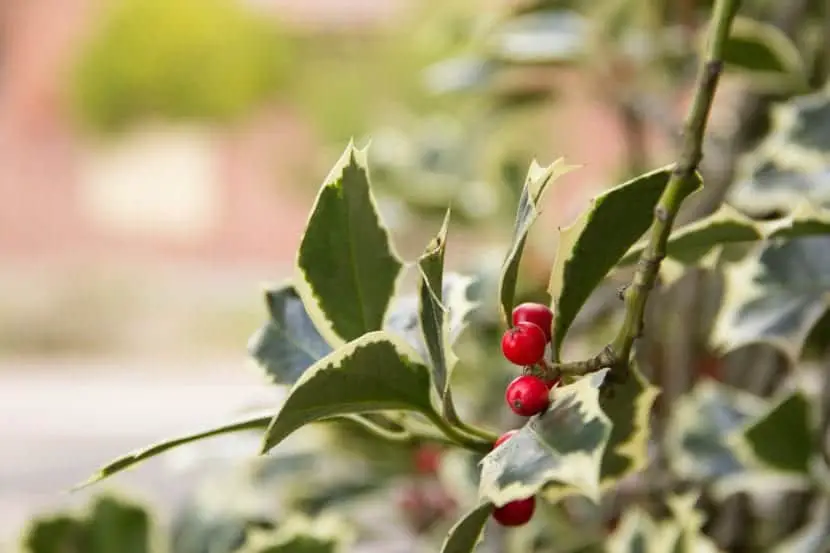
The holly It is one of the most popular trees in gardens since, despite having thorny leaves, it is very decorative and very easy to care for. It resists high temperatures and frost without problems, and can also be pruned without problems in late winter.
Let’s know more about this amazing tree.
Holly main characteristics

Holly, whose scientific name is Holly aquifoliumis a plant that can exceed 10 meters in height. It is native to southern and western Europe. Its leaves are evergreen, which means that it remains evergreen all year round, and they are dark green on the top and lighter on the underside, although there are different cultivars, such as the ‘Argenteo Marginata’ with dark green leaves with the white edges.
It is a dioecious species, that is, there are male feet and female feet. The flowers are small, white. And the fruit is a red berry when it finishes ripening, which occurs in autumn. Although they may seem very appetizing, humans shouldn’t eat itas they could end up having stomach pain, nausea, and vomiting. Birds and rodents, on the other hand, feed on them without problems.
Holly care

The care that this tree requires are the following:
- Location: outside, in semi-shade (that has more light than shade). Supports up to -17ºC.
- Soils: indifferent. It grows in both acids and alkalis.
- Subscriber: during spring and summer it is recommended to pay with organic fertilizers.
- Transplant: does not tolerate transplants too well. It is better to transplant it to its final location in spring.
- Irrigation: three times a week in summer, and every 5-6 days the rest of the year.
- Pruning: can be pruned in late winter.
- Reproduction: by seeds, which have to be sown as soon as they are collected, by semi-hard wood cuttings obtained in spring, or by air layering in spring-summer.
Holly is a very interesting garden plant, don’t you think?

